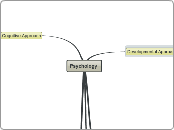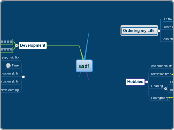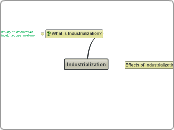Psychology
Research Methods
Other Key terms
Tables
Bar chart
Pie chart
Range
Mode
Median
Mean
Counterbalencing
Design
Matched Pairs Design
Repeated Design
Independent Design
Sample
Volunteer Sample
Random Sample
Opportunity Sample
Two tailed Hypothesis
One tailed Hypothesis
Null Hypothesis
Alternative Hypothesis
Experiment types
Strength of relationship
Data analysis technique
Hypothesis
Scattergram
Perfect
Variables
Negative
Positive
Relationship
Self-report
Validity
Social desirability
Qualitative/quanitiative data
Fixed response question
closed question
Open question
Likert scale
Survey
Interview
Questionnaire
Observation
Replication
Time Sampling
Event Sampling
Tally
Ethics
Inter-rater reliability
Coding System
Controlled
Naturalistic
Experiment
Graphs
Measures of central tendency
Data
Dependent Variable
Independent Variable
Quasi/natural
Field
Laboratory
Social Approach
Ethics of manipulating social situations
Application of results
Laboratory experiments
Field experiments
Ethnocentric
Social rules
Our place in soceity
Influence of others
Reicher and Haslam
commune
breakout
saliva swabs
psychometric tests
observation/recordings
uniforms
interventions
Role allocation
BBC
Priosen experiment
Milgram
debriefed
66% obeyed
stress, nervous laughter
verbal 'prods'
450 volts
word pairs
shock generator
Fixed role. teacher
Advertisement
Holocaust
Piliavin
Cost/benefits and arousal theory
Cane helped more
Males helped
Race
Observers
Model
Victim - cane/drunk
New York Subway
Kitty Genovese
Bystander intervention
Cognitive Approach
application of findings
developlemt of thinking
practical applications
Computer analogy
Thought proccess
Information Processing
Inferred Bhehaviour
Savage-Rumbaugh et al
Travel in forest
Formal testing
Productive receptive abilities
Indoor enviroment
Naturalistic enviroment
Maikia
Spontaneous use
Lexigraph
Kanzi
Baron-Cohen et al
Table results
3. Tourette's Syndrome = 20.4 (mean score on eyes task)
2. Control ('normal') = 20.3 (mean score on eyes task)
1. Autism/Asperger's = 16.3 (mean score on eyes task)
No difference between Group 2 and Group 3 on eyes task
Group 1 scored much lower on eyes task than the other 2 groups
Strange stories task used to test concurrent validity of the eyes task
Asked "Which word best describes what this person is feeling or thinking"
Forced to choose between 2 emotions
Shown for 3 seconds
Eyes task
25 standardised photos of eyes
Black and White
Quasi experiment
3 groups
10 Participants
Assumed to have normal IQ
Drawn from general population of Cambridge
50 Participants
25 female
25 male
Mean IQ of 105.3
12 with Asperger's syndrome
4 with high fuctioning autism
3 female
13 male
16 participants
Provide more support for the cognitive explanation of autism
eye task meant describing the emotion displayed by eyes
The theory of mind test used was the eye test
That autistic adults lack theory of mind skills.
Keywords
Impaired theory of mind
Basic emotion recognition
Gender recognitition task
Tourette
Asperger's
Autism
Loftus and Palmer
Study 2
Conclusions
Loftus and Palmer suggests there are two types of information for memory
2. Information we get after the event
1. Information from perceiving the event
Post event information distorts actual memory
Supports Study 1
Wording of question affected the participants memory of the event.
Smashed = more than twice as likley to see glass
Stats
Control
6/50
7/50
16/50
One Week later all subjects asked again
Did you see any broken glass?
Groups
Group 3
Not asked (Control)
Group 2
How fast were the cars going when they hit eachother
Group 1
How fast were the cars going when they smashed into each other
Procedure similar to study 1
Three groups of 50
150 students
Study 1
Conclusion
2. Responce Bias - demand characteristics
1. Verb distorts actual memorey
Results
The worse sounding the verb = the faster speed estimate
Method
DV
Estimate of speed
IV
Verb used in question
Five differrent verbs (one per condition)
Contacted
Hit
Bumped
Collided
Smashed
critical question was ''about how fast were the cars going when they ***** each other
asked to complete a questionnaire
Asked to write a short account of what they had seen
Seven clips of traffic accidents
Laboratory Experiment
Participants
Five groups of nine
45 students
Aim
Will the use of more severe sounding verbs to describe an accident leade participants?
Be more likley to (incorrectly) recall the presence of broken glass?
Produce a higher estimate of speed??
To investigate the effect of leading questions on the accuracy of eyewitness testimony
Key words
post-event information
'smashed' increased recall
broken glass
memory structure
verbs
Films of accidents
Students
Laboratory experiment
Eye witness testimony
Individual Differences Approach
Psychometric testing
Culture
Subjective unusual samples
Quantitiative and Qualitiative data
Applications to everyday life
Individuals
Uniqueness
Abnormality
Atypical behaviour
Thigpen and Cleckly
Multiple Personality disorder
Electroencephalograph
Jane
Interviews
Projective tests
Psychometric tests
Eve black
Letter
Eve white
Rosenhan
depersonalisation
stickiness of lables
interpretation of behaviour
Lack of contact
Patients rated as pseudo patients
Type 1 and type 2 errors
Diagnosis
Schizophrenia
Pseudopatients
Griffiths
Hindsight bias
Irrational verbalisations
Gamblers continued
Content analysis
Behavioual meaures
Thinking aloud
£3
Volunteer sample
Fruit machines
Gamblers
Physiological Approach
small atypical samples
Low ecological validity
Objective
controlled
Scientific
Experimental method
Simplified explanations
Nature
Brain structures
Biological
Dement and Kleitman
Content of dream
Direction of dream length
Estimation of dream length
Tape recorder
Recall of dreams
Bell
EEG
Rapid Eye Movement sleep
Sleep
Maguire et al
Control group
Cause and effect
Correlation
Right hippocampus
Posterior hippocampus (back end)
MRI scan/pixel count
'The Knowledge'
spatial memory
Hippocampus
Taxi drivers
Sperry
No communication, hemispheres
Left Language
Tactile tasks
Language centre
Brain Hemispheres
Visual fields
Epilespy
Corpus callosum
Developmental Approach
samples lack represntativesness
difficult to isolate one factor in development
children as participants
experimental method
development in stages
behaviour learned
applied to everyday life
Early experences influence
Samuel and Bryant
Two questions influences answer
conservation of number before
Conservation increases with age
Number/volume/mass
Fixed array
One question
Age
Conservation
Piaget's theory
Bandura
Inhibition of aggression
Non-imitative aggression
Gender differences
Observed
Arousal
Bobo doll
Witnessed Model
Matched Pairs
Nursery children
Imitation of aggression
Freud
Key terms
Resolved conflict
Witnessed horse fall
Giraffe dreams
Phobia of horses/father
Castration/widdler obsessed
Oedipal conflict
Phallic stage
Little Hans
Case study









